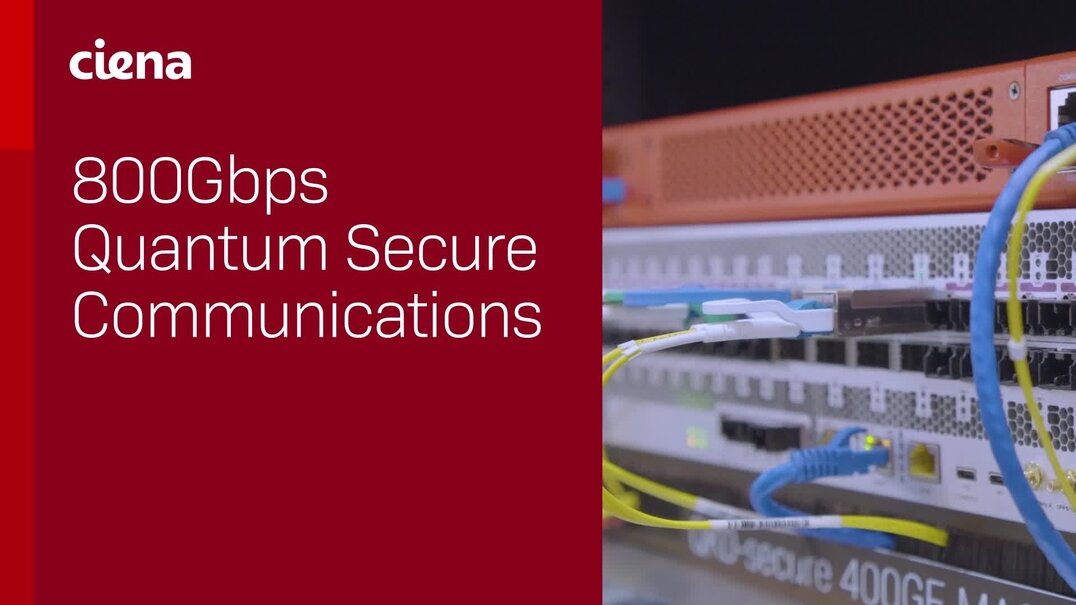Cable operators – the move to edge compute
The cable industry is deploying Distributed Access Architectures (DAA) and extending fiber closer to the customer as we move toward 10G. Does this mean the cable industry is well positioned for edge compute – moving compute and storage closer to the edge? What are the drivers, use cases, challenges, and investment areas as we evaluate moving to edge compute? These are some of the questions Broadband Success Partners discussed recently with executives at cable operators in North America.
We had an opportunity to further discuss the drivers, challenges, technology enablers and investment areas with David Strauss, Principal at Broadband Success Partners, and Fernando Villarruel, Chief Architect, MSO Practice at Ciena.
Drivers & Challenges
What insights did you get from cable executives regarding drivers to move to edge compute?
David: We asked executives in network engineering and business services what the top drivers are to move to edge compute – almost 60% noted either improved customer experience (29%) or enablement of new revenue streams (also 29%) as the most important driver at their company. For tier 1 operators the financial factors, new revenues and cost savings, were deemed most important. For tier 2 operators customer experience and scalability were identified as most important. Network engineering executives value all the drivers somewhat equally, while business services executives place a premium on customer experience and new revenues.
The reasons why these executives chose the driver they did are varied – ranging from “an improved customer experience due to lower latency for gaming and video optimization” to “choosing something that’s scalable is key so as to not augment later.”
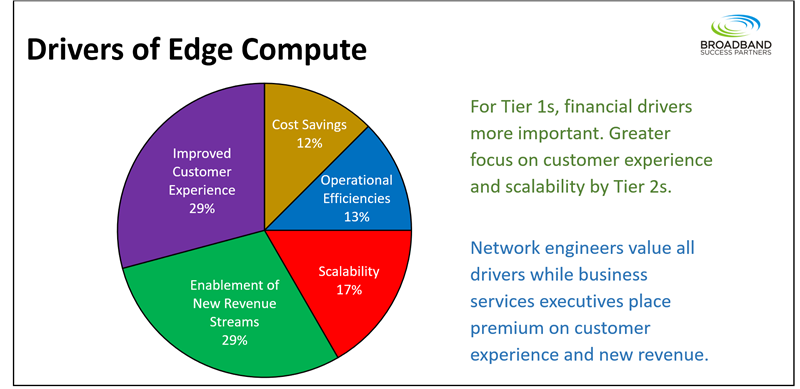
During a recent webinar with participants from 18 different cable operators we asked what the top driver is to move to edge compute. Over half of the respondents chose improved customer experience as the top response.
What were the top challenges in moving to edge compute?
David: The executives view operations to support monetizing new services and business models as a major challenge in advancing edge compute. Executives commented that edge computing is “a new paradigm driving new workflows, that many operational things need to be addressed,” and “the limitations of existing OSS/BSS environments create operational challenges.”
Knowing when and where to adapt network resources was also cited as a top challenge. Cable operators will need to rely on increased levels of network automation to support more distributed and dynamic traffic associated with edge compute.
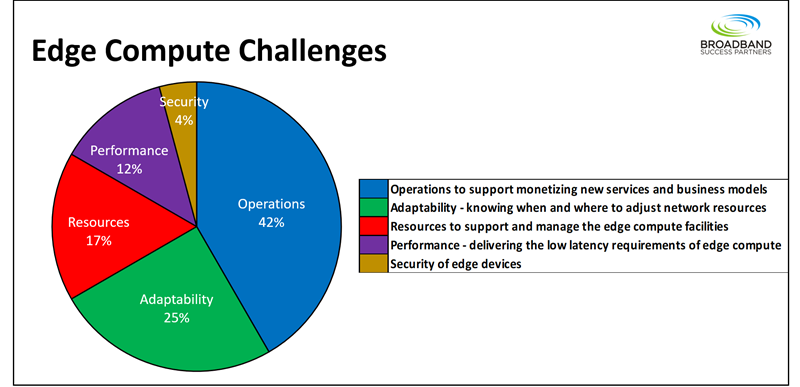
Technology Enablers
What does the journey look like for cable operators as we move to edge compute?
Fernando: The starting point as we move to edge compute begins with integrated systems, a system or platform that does some specific set of tasks or workloads. Then virtualization happens, disaggregating hardware from the software capabilities. The software is then formatted or organized in a way that makes it highly flexible. In scale, this implies a cloud native architecture, leveraging containers for instance. Then edge compute – the positioning of compute at different parts of the network – is not only possible, but efficient.
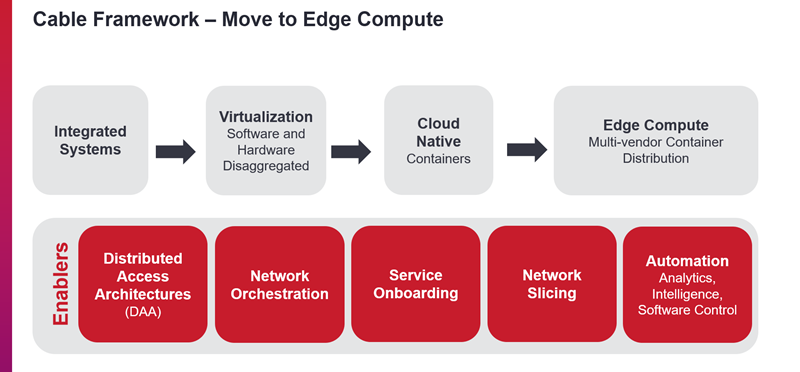
From the cable network perspective, let’s look at some of the key technology enablers along the way. The game changer here is the occurring shift to Distributed Access Architectures (DAA). The notion of taking intelligence to the field has really opened several creative avenues to facilitate compute at multiple places and at various levels in the network. The stated goal of DAA was not necessarily to distribute compute, but when function-specific ASICS or FPGAs are put in field nodes they naturally take compute with them, leaving that door open. As an aside, it was interesting to see several General Access Platform (GAP) node demos at SCTE EXPO 2019 that showed hefty compute capabilities.
By alleviating footprint, DAA creates the physical space to introduce computation in hubs. The extraction of PHY’s from DOCSIS and video packet cores allows for all kind of computation placement that can span the whole network, and there is always the possibility of leveraging hyperscale application partners in hybrid-cloud scenarios, as needed
Network orchestration is a necessity with network items and functions positioned throughout the network. With edge compute, we will need to include APIs for software processes along the way as part of a broader network orchestration dynamic for app and device awareness at different points in the network.
As the transition to cloud happens, the compute edges along the network will have network functions from different software vendors – 10G Flexible MAC Architecture (FMA) and business services are examples where this will be prevalent. Service onboarding will be required to manage software and resources at different compute edges.
A digital residential network enables converging different types of services on the same aggregation network, however, the need for logically independent networks remains and so the principle of network slicing is quite useful. The mobile industry has anticipated this in 5G, and the cable industry will make use of similar principles on the path to 10G.
The ultimate target is that these networks are not static – this is where automation comes in. Edge computing will require that networks transform to dynamic, programmable environments driven by analytics and intelligence – Ciena’s vision is The Adaptive NetworkTM.
Investment Areas
What did the research reveal about the top investment areas to move to edge compute?
David: Far and away, physical and virtual network infrastructure was the top investment area to move to edge compute. Executive comments included that edge compute is a different operating model and there is a need to rethink network topologies, the need to integrate with existing network equipment, and the massive scale of new network elements.
Network automation was also a top investment area for cable operators to move to edge compute. Automation for orchestration and to operationalize edge compute was cited by executives, as was the linkage between technical skills and the need for automation. “Can’t launch edge sites the way we do data centers,” said one executive.
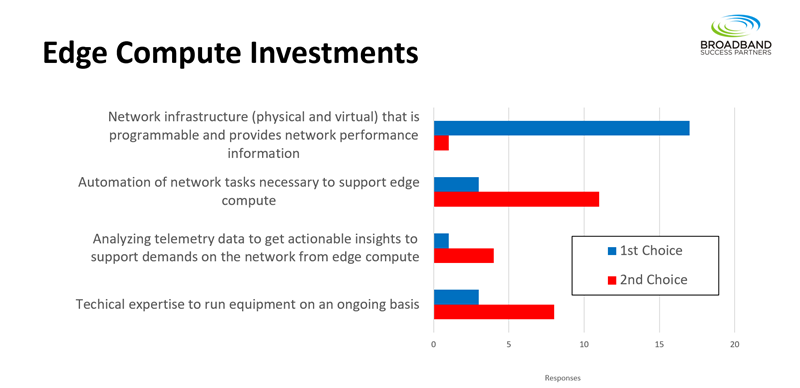
We also asked the webinar participants what they viewed as the greatest investment to enable edge compute. Almost three quarters of respondents chose network infrastructure (physical and virtual).
For more information on this research please check out the Cable Operators and Edge Computing webinar with David and Fernando. You can also get additional information in the associated Broadband Success Partners Research Report.





